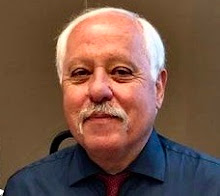For me, a critical component of travel is the ability to go
it alone, or with just one other. You simply have more control over your
schedule, allowing for flexibility, spontaneity and perhaps a bit of
serendipity. Travel groups and excursions may be fine for some, but the fact
that you’re always on somebody else’s schedule does not work for me.
The piazzas and parks are free of charge, so that’s where I typically start.
In Genoa, the city’s focal point is the Piazza Ferrari (above), just blocks from our berth at the Hotel Colombo, on the west end of Via XX Settembre, the elegant shopping boulevard.
The old town winds west of the elaborate town square from Porta Soprana, encircling the waterfront.
Along the Mediterranean (above), the “park deluxe” must be the Cinque Terre, which was designated as a national park in 1999. Autos and “motorini” are not allowed in the villages, which are connected by train and hiking trail, as well as by boat. Despite the limited access, the villages are still quite crowded during high season.
In Torino, the Piazza Castello (below) is the city’s center square, encircled with museums, theatres and cafes. Primarily baroque, the piazza was designed in the 14th century as the seat of government for the House of Savoy, one of the oldest ruling family dynasties in the world, a key political force leading the Italian Resurgence.
The best park? Parco de Valentino along the Po River (right), the lifeblood of Northern Italy, is an arboretum popular with joggers, bicyclists and, at night, revelers. Rumor has it that the Chiesa di Gran Madre di Dio, built in the early 19th century and closed to the public, includes a sepulcher housing the Holy Grail, the chalice of Jesus.
Did somebody say “Indiana Jones?” Italian archaeologists and adventurers Francesco Ballerini and Giovanni Marro directed some of the most important discoveries in Egyptian antiquity, including the discovery of Queen Nefertari's tomb in the Valley of the Queens in Luxor.
Much of the collection is on display at the Muzeo Egezio, just blocks from the Hotel Roma in Torino.
Few do the fashion thing better than Italians; the country is one of the leaders in fashion design, which is an important part of cultural life. Known for their attention to "la bella figura" (good impression), Italians dress well.
Boutiques feature the finest apparel, and all display signage advertising 30-70 percent off. Makes you wonder about the markup, but hey, it’s Italian! The leather handbags and shoes are among the best.
When it comes to eateries, you have ristorantes, trattorias, tavernas, osterias and cafes and frankly, in some cases, the lines tend to blur. The good news is that even the inexpensive places have good quality food. Better news: the expensive ones are divine.
Take the Taverna Della Rosa, recommended by our concierge at the Hotel Roma in Torino (left), for example.
Though technically a tavern, the small eatery featured the look of a fine restaurant. Most of the more exclusive restaurants open at 8 p.m. for dinner, but the Della Rosa opened at 7 p.m., more befitting our schedule.
When we arrived, we had the place to ourselves, though I caused a mild kerfuffle when I had the poor taste to order a glass of Remy Martin before dinner.
“Oh, no, sir,” the server advised, “you have those after dinner.” “Trust me,” I countered, as she looked pleadingly at the hostess for support. Finally, the owner, who also happened to be the cook, lent his support to the notion of waiting until after dinner. “No,” I said, “I’ll be fine.” Well, at least he tried.
In retrospect, traveling without portfolio is the only way to go.
No need to submit to restrictions or much of anything in terms of schedule or orientation, allowing for maximum independence, flexibility, and perhaps most importantly, spontaneity. Like in Alice In Wonderland: “if you don’t know where you are going, almost any road will take you there.”













